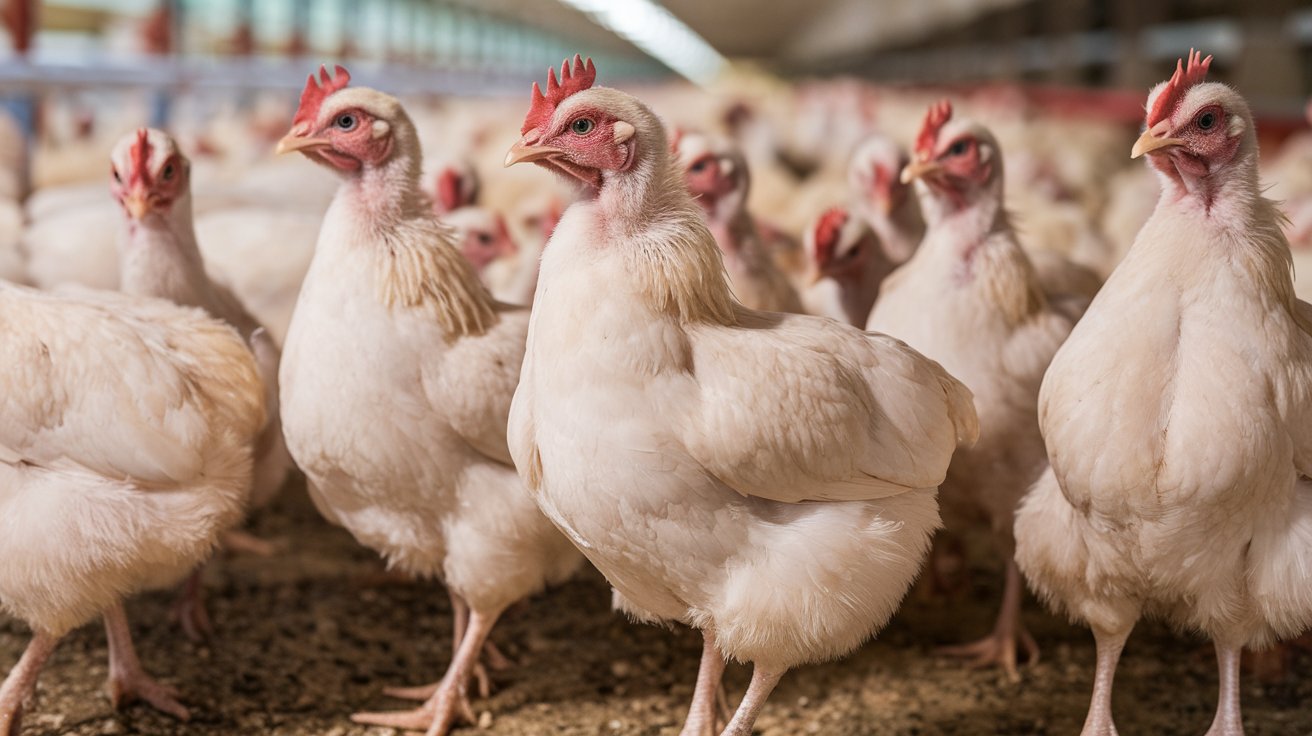
Runting-Stunting Syndrome (RSS) in broilers is a condition that affects young chickens, leading to poor growth and development. This syndrome can cause significant economic losses in poultry farming due to decreased weight gain and increased feed costs. RSS is characterized by uneven growth, where some birds in a flock remain smaller and weaker than their peers. The exact cause of RSS is not well understood, but it is believed to be linked to various factors such as viral infections, poor nutrition, and environmental stress. Understanding RSS is crucial for poultry farmers to manage and prevent this condition effectively. In this post, we'll explore 30 essential facts about Runting-Stunting Syndrome to help you better understand and tackle this issue in your broiler flocks.
Key Takeaways:
- Runting-Stunting Syndrome (RSS) in broiler chickens is caused by a viral infection, leading to poor growth, feather abnormalities, and digestive issues. It impacts poultry production and requires early detection and management.
- Prevention and control measures, such as strict biosecurity, vaccination, and good management practices, can help mitigate the impact of Runting-Stunting Syndrome (RSS) in broiler chickens. Ongoing research aims to develop more effective prevention and treatment strategies.
What is Runting-Stunting Syndrome?
Runting-Stunting Syndrome (RSS) affects broiler chickens, causing poor growth and development. This condition can significantly impact poultry production, leading to economic losses for farmers.
-
RSS is a viral disease: The primary cause of RSS is a viral infection, often linked to reoviruses. These viruses disrupt the normal growth of broilers.
-
Symptoms appear early: Chicks show symptoms within the first week of life. They may appear smaller and weaker compared to healthy chicks.
-
Uneven growth rates: Affected flocks exhibit uneven growth rates, with some birds growing normally while others lag behind.
-
Feather abnormalities: Chicks with RSS often have poor feathering. Their feathers may be sparse, ruffled, or slow to develop.
-
Digestive issues: RSS can cause digestive problems, leading to poor nutrient absorption. This exacerbates growth issues.
-
Increased mortality: Higher mortality rates are common in flocks with RSS, especially if secondary infections occur.
Causes and Transmission
Understanding the causes and transmission of RSS helps in managing and preventing the syndrome.
-
Reovirus infection: Reoviruses are the main culprits behind RSS. They can spread through contaminated feed, water, or equipment.
-
Vertical transmission: Infected breeder hens can pass the virus to their offspring through eggs.
-
Horizontal transmission: The virus can spread from bird to bird within a flock, making containment challenging.
-
Environmental factors: Poor hygiene, overcrowding, and inadequate ventilation can increase the risk of RSS.
-
Stress factors: Stressful conditions, such as sudden temperature changes or poor nutrition, can exacerbate the syndrome.
Diagnosis and Detection
Early detection of RSS is crucial for managing the condition and minimizing losses.
-
Clinical signs: Veterinarians look for clinical signs like poor growth, feather abnormalities, and digestive issues.
-
Laboratory tests: Blood tests and tissue samples can help identify the presence of reoviruses.
-
Histopathology: Examining tissues under a microscope can reveal characteristic changes associated with RSS.
-
PCR testing: Polymerase chain reaction (PCR) tests can detect viral DNA, confirming the presence of reoviruses.
Impact on Poultry Production
RSS has significant economic implications for poultry farmers.
-
Reduced weight gain: Affected broilers gain weight more slowly, leading to lower market weights.
-
Increased feed conversion ratio: RSS-affected birds require more feed to gain weight, increasing production costs.
-
Lower uniformity: Flocks with RSS have less uniformity, making processing and marketing more challenging.
-
Higher culling rates: Farmers may need to cull severely affected birds, leading to further economic losses.
-
Increased veterinary costs: Managing RSS often requires additional veterinary care and interventions.
Prevention and Control
Effective prevention and control measures can help mitigate the impact of RSS.
-
Biosecurity measures: Implementing strict biosecurity measures can reduce the risk of viral transmission.
-
Vaccination: Vaccinating breeder hens against reoviruses can help prevent vertical transmission.
-
Good management practices: Ensuring proper nutrition, hygiene, and ventilation can reduce stress and lower the risk of RSS.
-
Regular monitoring: Regular health checks and monitoring can help detect RSS early and prevent its spread.
-
Isolation of affected flocks: Isolating affected flocks can help contain the virus and prevent it from spreading to healthy birds.
Research and Future Directions
Ongoing research aims to better understand RSS and develop more effective prevention and treatment strategies.
-
Genetic studies: Researchers are studying the genetic factors that make some birds more susceptible to RSS.
-
Vaccine development: New vaccines are being developed to provide better protection against reoviruses.
-
Nutritional interventions: Studies are exploring how improved nutrition can help mitigate the effects of RSS.
-
Environmental controls: Research is focused on how environmental controls, like improved ventilation, can reduce the incidence of RSS.
-
Global collaboration: Scientists and veterinarians worldwide are collaborating to share knowledge and develop better strategies for managing RSS.
Understanding Runting-Stunting Syndrome
Runting-Stunting Syndrome (RSS) in broilers is a complex issue affecting poultry farmers worldwide. Recognizing the symptoms early, such as uneven growth and poor feathering, can help manage the condition. Prevention is key, focusing on biosecurity measures, proper nutrition, and maintaining a clean environment. While there's no cure, supportive care and good management practices can reduce the impact on flocks.
Farmers should work closely with veterinarians to develop effective strategies tailored to their specific needs. Staying informed about the latest research and advancements in poultry health can also make a significant difference. By taking proactive steps, the negative effects of RSS can be minimized, ensuring healthier, more productive broiler chickens.
Understanding RSS and implementing preventive measures not only helps in maintaining flock health but also contributes to the overall success of poultry farming operations.
Frequently Asked Questions
Was this page helpful?
Our commitment to delivering trustworthy and engaging content is at the heart of what we do. Each fact on our site is contributed by real users like you, bringing a wealth of diverse insights and information. To ensure the highest standards of accuracy and reliability, our dedicated editors meticulously review each submission. This process guarantees that the facts we share are not only fascinating but also credible. Trust in our commitment to quality and authenticity as you explore and learn with us.


